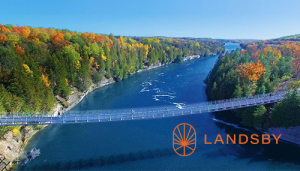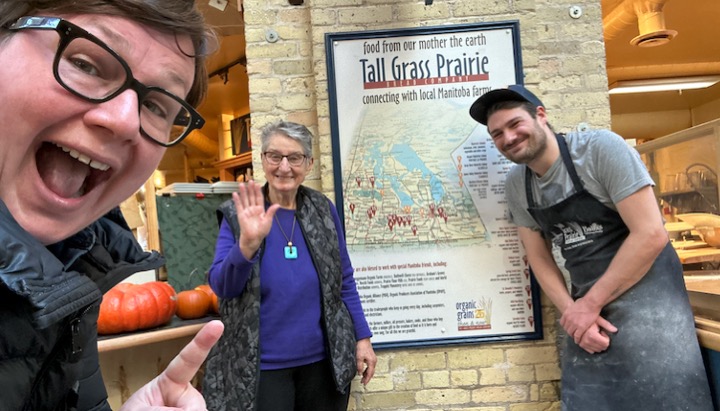Salut Canada est heureuse et fière de vous annoncer qu’une section de la Route Champlain a été commercialisée!
Cette section de la Route Champlain est le seul produit touristique commercialisé offrant des services en français au Canada à l’extérieur du Québec.
Ce pas de géant confirme que le tourisme francophone au Canada a le vent dans les voiles!


Ontario
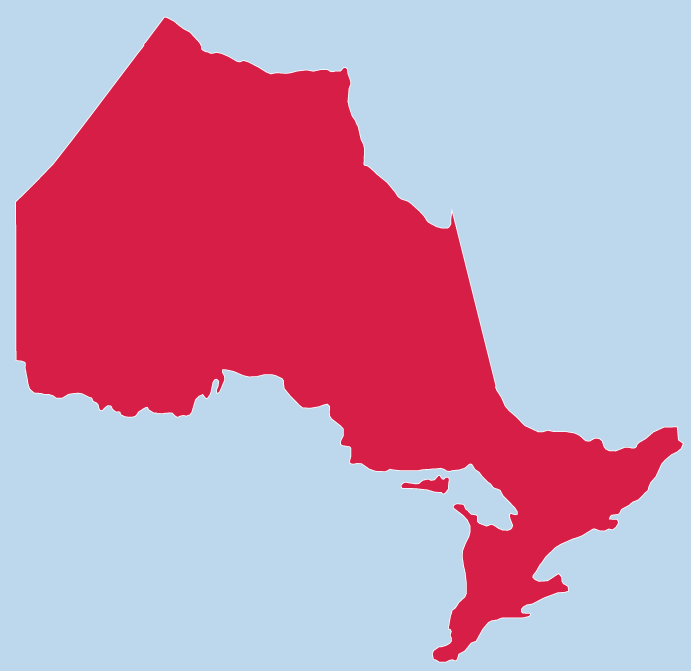
Ontario
FILTRER PAR : CATÉGORIES VILLE
Activités et expériences
- 1000 Islands Helicopter Tours
- Aire de conservation Sager
- Aquatarium
- Aventure cycliste tout-inclus à l'Île manitoulin
- Aventures l'esprit du nord
- Gananoque Boat Line - 1000 Islands Cruises
- Georgian Bay Airways
- La Route touristique Champlain de l’Ontario : sur les pas du père de la Nouvelle-France
- Le Muséoparc Vanier, préserver et célébrer le patrimoine francophone à Ottawa
- Les chutes Niagara, le visage français d’une spectaculaire attraction naturelle
- Musée canadien de l’histoire
- Ottawa Walking Tours
- Owl Rafting
- Parc aquatique Calypso
- Parc historique du Fort William
- Scenic Caves Nature Adventures
- Science Nord
- Terre dynamique
- Tour du lac Témiscamingue
- Marche Hantée
- Voyageur Wilderness
- Rideau Tours et locations
- Family Earth
- Forfaits et excursions ecotouristiques blaq-bear
- Parc provincial Samuel de Champlain
- Parc provincial de la rivière des Français
- Parc provincial Driftwood
- Centre Madawaska Kanu
- Parc provincial Voyageur
Arts et culture
- Ancienne prison de L’Orignal
- Centre culturel Le Chenail - Maison de l'Île
- Écomusée de Hearst
- Festival du Loup de Lafontaine, célébrer la culture et les racines francophones
- Fort William, pôle d’échanges majeur et forte influence française
- Franco-Fête de Toronto : faire vibrer la francophonie en musique
- Le Festival franco-ontarien d’Ottawa, entendre et étendre la culture francophone
- Le Parlement canadien et les francophones du Canada
- Les artistes franco-ontariens, une richesse culturelle nationale
- Les francophones aux origines de Toronto, un patrimoine discret
- Maison Macaulay
- North Bay Museum
- Place du marché de la scierie patrimoniale
- Sainte-Marie-au-Pays-des-Hurons, première mission française au cœur de l’Amérique
- Sanctuaire des martyrs
- Sentier « Connections » de Billings
- Société d'histoire de Toronto Historitours
- Théâtre français à Toronto : premier à « brûler les planches » dans la Ville Reine
- Toronto Balades
- Université d’Ottawa, bilinguisme et tremplin pour les Franco-Ontariens
- Vitalité francophone à Orléans et dans le comté Prescott-Russell
- Musée canadien du canot
- Musée de l’histoire des Milles-Îles
- Maison du patrimoine d’Orléans
- Concerts à la grange Westben
Hébergement
Expériences culinaires
- Aventures Ferme Ouimet
- Distillerie Rheault
- Ferme Drouin
- Ferme Leisure Farms
- Huff Estates (établissement vinicole)
- La Fromagerie St-Albert
- Microbrasserie Cassel
- Restaurant 1 Elgin
- Chocolaterie Forrat
- Randonnée gastronomique du Marché By
Portrait des communautés
Atikokan
Barry's Bay
Beachburg
Bloomfield
Brockville
Calabogie
Campbellford
Casselman
Chute-à-Blondeau
Collingwood
Elgin
Forester Falls
French River
Gananoque
- 1000 Islands Helicopter Tours
- Gananoque Boat Line - 1000 Islands Cruises
- Musée de l’histoire des Milles-Îles
Goulais River
Haileybury
Hawkesbury
Hearst
Ingleside
Kagawong
L'Orignal
Lac Timiskaming
Lafontaine
Limoges
Mattawa
Mindemoya
Niagara Falls
North Bay
Orléans
Ottawa
- Le Festival franco-ontarien d’Ottawa, entendre et étendre la culture francophone
- Le Muséoparc Vanier, préserver et célébrer le patrimoine francophone à Ottawa
- Le Parlement canadien et les francophones du Canada
- Musée canadien de l’histoire
- Ottawa Walking Tours
- Université d’Ottawa, bilinguisme et tremplin pour les Franco-Ontariens
- Marche Hantée
- Restaurant 1 Elgin
- Randonnée gastronomique du Marché By
Parry Sound
Pembroke
Peterborough
Picton
S
- Sainte-Marie-au-Pays-des-Hurons, première mission française au cœur de l’Amérique
- Sanctuaire des martyrs
Smooth Rock Falls
St-Albert
Stirling
Stonecliffe
Sturgeon Falls
Sudbury
Thunder Bay
Toronto
- Centre francophone de Toronto, au cœur de la francophonie plurielle torontoise
- Franco-Fête de Toronto : faire vibrer la francophonie en musique
- La Route touristique Champlain de l’Ontario : sur les pas du père de la Nouvelle-France
- Le Nord franco-ontarien : nature, culture et hospitalité
- Les artistes franco-ontariens, une richesse culturelle nationale
- Les francophones aux origines de Toronto, un patrimoine discret
- Société d'histoire de Toronto Historitours
- Théâtre français à Toronto : premier à « brûler les planches » dans la Ville Reine
- Toronto Balades
- Chocolaterie Forrat
Vankleek Hill
Windsor

Québec
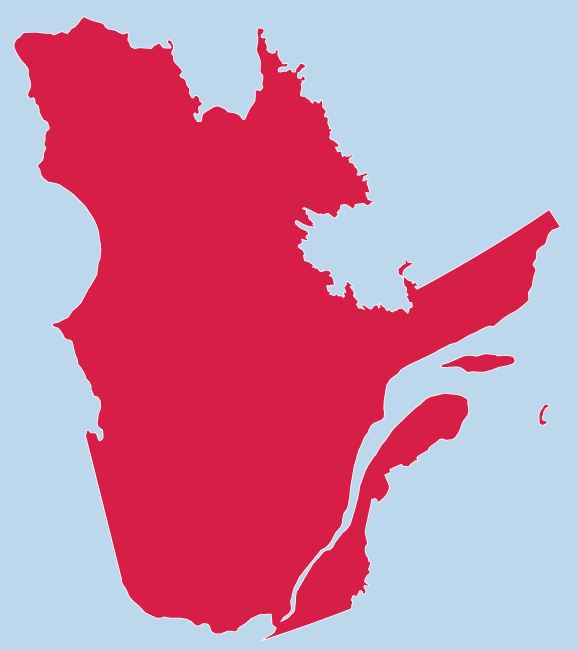
Québec
FILTRER PAR : CATÉGORIES VILLE
Activités et expériences
- Zoo sauvage de Saint-Félicien
- Zoo de Granby
- Wendake, le patrimoine d’une grande nation
- Vivre Percé au moins une fois dans sa vie !
- Visiter le magnifique village ressuscité de Val-Jalbert
- Village Vacances Valcartier
- Village Québécois d’Antan
- Vieux-Québec, joyau du patrimoine mondial de l’UNESCO
- Tourisme Isle-aux-Coudres
- Tadoussac : les attraits géants d’une petite localité
- Surprise sous la terrasse : le prestigieux site archéologique des Forts-et-Châteaux-Saint-Louis
- Surf sur le Canal Lachine
- Site historique maritime de Pointe-au-Père : éclairer le passé maritime du Québec
- Rodéo du camion
- Résidence de George-Étienne Cartier, illustre politicien canadien-français, Père de la Confédération
- Quartier Petit-Champlain, le bonheur du patrimoine
- Pulperie de Chicoutimi, un patrimoine industriel exceptionnel
- Parlement du Québec et Assemblée nationale, lieu de pouvoir et de mémoire
- Parc Safari
- Parc Oméga
- Parc national du Mont-Tremblant
- Parc national du Bic
- Parc national de l’Île-Bonaventure-et-du-Rocher-Percé
- Parc aquatique Sommet Saint-Sauveur
- OSHEAGA
- Mont Saint-Pierre Deltaplane
- Maison Saint-Gabriel, mise en valeur exemplaire de l’histoire à Montréal
- Les incontournables plaines d’Abraham : patrimoine, musées, spectacles et activités de plein air
- Les Forges du Saint-Maurice, patrimoine de l’industrie sidérurgique au Canada
- Le Vieux-Séminaire de Québec, un trésor culturel et patrimonial
- Le tour de l’île d’Orléans, un parcours inoubliable
- Le site patrimonial de Trois-Rivières : se promener dans l’histoire
- Le précieux legs des Ursulines, premières enseignantes du Québec
- Le parc du Mont-Royal, une oasis naturelle et culturelle au cœur de Montréal
- Le monastère des Augustines, valoriser et transmettre le patrimoine
- Le Marché Bonsecours, une icône du Vieux-Montréal
- Le manoir Louis-Joseph-Papineau, un bâtiment patrimonial doublement important
- Le Jardin botanique de Montréal, vitrine et gardien d’un extraordinaire patrimoine végétal
- Le Festival de musique émergente
- Le Festival d’été de Québec
- Le Centre d’histoire de Montréal, une agréable machine à remonter le temps
- Le Carnaval de Québec : célébrer notre hiver depuis trois générations
- Le Banc-de-pêche-de-Paspébiac, joyau patrimonial sur un barachois
- La Route des cidres
- La Route des Belles-Histoires, découvrir le patrimoine de la magnifique région des Laurentides
- La Réserve mondiale de la biosphère de Charlevoix
- La Cité de l’Or, un trésor du patrimoine minier en Abitibi
- La Cité de l’énergie, plus qu’un patrimoine hydroélectrique et industriel exceptionnel !
- L’Oratoire Saint-Joseph, un sanctuaire de renommée internationale
- L’exposition permanente sur l’histoire du Québec du Musée de la civilisation du Québec
- Foresta Lumina
- Festival western de Saint-Tite
- Festival de la chanson de Tadoussac
- Espace pour la vie – Jardin botanique
- Espace pour la vie – Insectarium
- Espace pour la vie – Planétarium
- Espace pour la vie – Biodôme
- Écomusée du fier monde : un musée citoyen de l’histoire industrielle et ouvrière de Montréal
- Deux bonnes raisons de célébrer l’histoire à Chambly
- Croisière Partie de pêche
- Citadelle de Québec, quartier général du Royal 22e Régiment, un lieu patrimonial unique
- Charme et richesse du site patrimonial du Vieux-Montréal
- Cassis Monna et filles
- Boréalis, fascinant centre d’histoire de l’industrie papetière à Trois-Rivières
- Basilique Notre-Dame de Montréal, joyau du patrimoine religieux québécois
- Aérosport
Hébergement
Baie-Saint-Paul
Cap-aux-Meules
Chambord
Coaticook
Drummondville
Gatineau
Granby
Hemmingford
Hope
L'Isle-aux-Coudres
Lac-Supérieur
Mont-Saint-Pierre
Montebello
Montréal
- Surf sur le Canal Lachine
- Résidence de George-Étienne Cartier, illustre politicien canadien-français, Père de la Confédération
- OSHEAGA
- Maison Saint-Gabriel, mise en valeur exemplaire de l’histoire à Montréal
- Le parc du Mont-Royal, une oasis naturelle et culturelle au cœur de Montréal
- Le Marché Bonsecours, une icône du Vieux-Montréal
- Le Jardin botanique de Montréal, vitrine et gardien d’un extraordinaire patrimoine végétal
- Le Centre d’histoire de Montréal, une agréable machine à remonter le temps
- L’Oratoire Saint-Joseph, un sanctuaire de renommée internationale
- Espace pour la vie – Jardin botanique
- Espace pour la vie – Insectarium
- Espace pour la vie – Planétarium
- Espace pour la vie – Biodôme
- Écomusée du fier monde : un musée citoyen de l’histoire industrielle et ouvrière de Montréal
- Charme et richesse du site patrimonial du Vieux-Montréal
- Basilique Notre-Dame de Montréal, joyau du patrimoine religieux québécois
Notre-Dame-du-Nord
Oka
Percé
Québec
- Vieux-Québec, joyau du patrimoine mondial de l’UNESCO
- Surprise sous la terrasse : le prestigieux site archéologique des Forts-et-Châteaux-Saint-Louis
- Quartier Petit-Champlain, le bonheur du patrimoine
- Parlement du Québec et Assemblée nationale, lieu de pouvoir et de mémoire
- Les incontournables plaines d’Abraham : patrimoine, musées, spectacles et activités de plein air
- Le Vieux-Séminaire de Québec, un trésor culturel et patrimonial
- Le précieux legs des Ursulines, premières enseignantes du Québec
- Le monastère des Augustines, valoriser et transmettre le patrimoine
- Le Festival d’été de Québec
- Le Carnaval de Québec : célébrer notre hiver depuis trois générations
- La Route des cidres
- La Route des Belles-Histoires, découvrir le patrimoine de la magnifique région des Laurentides
- L’exposition permanente sur l’histoire du Québec du Musée de la civilisation du Québec
- Citadelle de Québec, quartier général du Royal 22e Régiment, un lieu patrimonial unique
Rimouski
- Site historique maritime de Pointe-au-Père : éclairer le passé maritime du Québec
- Parc national du Bic
Rouyn-Noranda
Saguenay
Saint-Félicien
Saint-Gabriel-de-Valcartier
Saint-Pierre
Saint-Sauveur
Sait-Tite
Shawinigan
Stoneham-et-Tewkesbury
Tadoussac
Trois-Rivières
- Les Forges du Saint-Maurice, patrimoine de l’industrie sidérurgique au Canada
- Le site patrimonial de Trois-Rivières : se promener dans l’histoire
- Boréalis, fascinant centre d’histoire de l’industrie papetière à Trois-Rivières
Val-d'Or

Nouveau-Brunswick
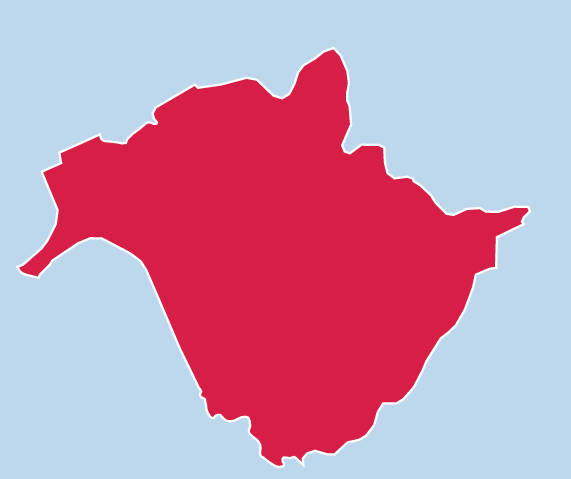
Nouveau-Brunswick
FILTRER PAR : CATÉGORIES VILLE
Activités et expériences
- Aquarium et Centre marin du Nouveau-Brunswick
- Aventures Plein Air Du Repos
- Bass Attack Fishing
- Croisières Shediac Bay Cruises
- Deux îles, mille trésors
- Écocentre homarus
- Jardin botanique du Nouveau-Brunswick
- L'Île Beaubears
- La remarquable effervescence artistique contemporaine en Acadie
- Le 15 août, célébrez la fête nationale de l’Acadie!
- Miellerie Charlo
- Mont Carleton
- Parc des Rochers Hopewell Rocks
- Parc Vélo Sugarloaf
- Réserve naturelle de la Pointe-Daly
- Roads To Sea
- Savonnerie Olivier
- Sentier Nepisiguit Mi'gmaq
- Verger Belliveau
- Zip Zag inc
- Zoo de Magnetic Hill
- Véloroute Péninsule acadienne
- Creekside RnR Glamping Accomodation
- Maplebrook Retreat – Glamping, Spa Nordique, Restaurant
- Spa le nordique de la vie
Arts et culture
- Kings Landing
- L’incontournable Festival acadien de Caraquet
- Musée du Nouveau-Brunswick
- The Chocolate Museum
Hébergement
Expériences culinaires
Portrait des communautés
- Au Pays de la Sagouine, l’imaginaire acadien d’Antonine Maillet
- Edmundston, le Madawaska et le patrimoine des « Brayons »
- Fort Beauséjour-Cumberland, un jalon historique pour les francophones du Canada
- L’Université de Moncton, clé de voûte du développement des Acadiens
- La prospère communauté acadienne du grand Moncton
- Le Centre culturel Aberdeen, pôle artistique francophone à Moncton
- Le drapeau acadien géant de Saint-Louis-de-Kent et le géant Richard qui l’a conçu
- Le patrimoine militaire du fortin du P’tit Sault à Edmundston
- Monument Lefebvre de Memramcook : renaissance acadienne et vitalité culturelle contemporaine
- Parlement de Fredericton, les Acadiens et leur patrimoine politique
- Saint-Jean, une communauté francophone créative et dynamique
- Shippagan, Lamèque et Miscou, au cœur de l’Acadie maritime
- Village historique acadien de Caraquet : revivre l’histoire de l’Acadie
Atholville
Aulac
Bathurst
Bouctouche
Caraquet
- L’incontournable Festival acadien de Caraquet
- Le 15 août, célébrez la fête nationale de l’Acadie!
- Village historique acadien de Caraquet : revivre l’histoire de l’Acadie
Charlo
Cocagne
Derby
Edmundston
- Acadie Gourmet
- Edmundston, le Madawaska et le patrimoine des « Brayons »
- Jardin botanique du Nouveau-Brunswick
- Le patrimoine militaire du fortin du P’tit Sault à Edmundston
- Les Brasseurs du Petit-Sault
Fredericton
Grand Falls
Hopewell Cape
Memramcook
Miscou
Moncton
- L’Université de Moncton, clé de voûte du développement des Acadiens
- La prospère communauté acadienne du grand Moncton
- La remarquable effervescence artistique contemporaine en Acadie
- Le Centre culturel Aberdeen, pôle artistique francophone à Moncton
- Monument Lefebvre de Memramcook : renaissance acadienne et vitalité culturelle contemporaine
- Roads To Sea
- Shippagan, Lamèque et Miscou, au cœur de l’Acadie maritime
- Zoo de Magnetic Hill
Mundleville
Northesk
Paquetville
Prince William
Saint John
Saint-Louis-de-Kent
Saint-Quentin
Saint-Stephen
Sainte-Anne-de-Kent
Shédiac
Shediac Bridge
Shippagan
Tracadie-Sheila

Île-du-Prince-Édouard
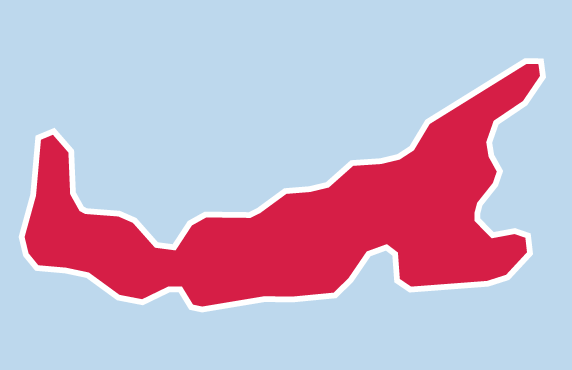
Île-du-Prince-Édouard
FILTRER PAR : CATÉGORIES VILLE
Activités et expériences
- Les Maisons de bouteilles
- Maison du gouvernement à Fanningbank
- Mill River Experience, Resort - Golf - Campground
- Le Centre Goéland
- Parc national de l’Île-du-Prince-Édouard
- Site patrimonial Green Gables
Arts et culture
- Coopérative d’artisanat d’Abram-Village
- Église historique Notre-Dame-du-Mont-Carmel
- La Coopérative de développement culturel et patrimonial de Mont-Carmel
- La remarquable effervescence artistique contemporaine en Acadie
- Maison Doucet et Banque des fermiers de Rustico, un lieu historique national révélateur de la solidarité acadienne
- Musée acadien de l’Île-du-Prince-Édouard à Miscouche : la mémoire des Acadiens de l’Île
- Port-la-Joye–Fort Amherst, des vestiges lourds de sens
- Province House
- Village musical acadien (Fête Nationale de l'Acadie)
- L’Exposition agricole et Festival acadien de la Région Évangéline
- Galerie La Palette
- Carrefour de l'Isle-Saint-Jean
- Musée acadien de l’Île-du-Prince-Édouard
- Festival “Meat Pie”
- Festival de la chanson du Grand Ruisseau
Hébergement
Expériences culinaires
- Island Artisan Cheesehouse - La Fromagerie
- Savourez le lieu historique national Roma à Trois-Rivières, Île-du-Prince-Édouard
- Café Cap Egmont
Portrait des communautés
Abram-Village
- La vibrante communauté acadienne d’Abram-Village
- Village musical acadien (Fête Nationale de l'Acadie)
- L’Exposition agricole et Festival acadien de la Région Évangéline
- Galerie La Palette
Brudenell
Cavendish
Charlottetown
Dalvay by the Sea
Fort Amherst
Miscouche
- Musée acadien de l’Île-du-Prince-Édouard à Miscouche : la mémoire des Acadiens de l’Île
- Musée acadien de l’Île-du-Prince-Édouard
Mont-Carmel
- La Coopérative de développement culturel et patrimonial de Mont-Carmel
- Festival de la chanson du Grand Ruisseau
Mont-Carmel Wellington
Rustico
- L'auberge Le Barachois
- Maison Doucet et Banque des fermiers de Rustico, un lieu historique national révélateur de la solidarité acadienne
- Festival “Meat Pie”
Wellington
- Coopérative d’artisanat d’Abram-Village
- Église historique Notre-Dame-du-Mont-Carmel
- La remarquable effervescence artistique contemporaine en Acadie
- Les Maisons de bouteilles
- Le Centre Goéland
- Café Cap Egmont
Woodstock

Nouvelle-Écosse
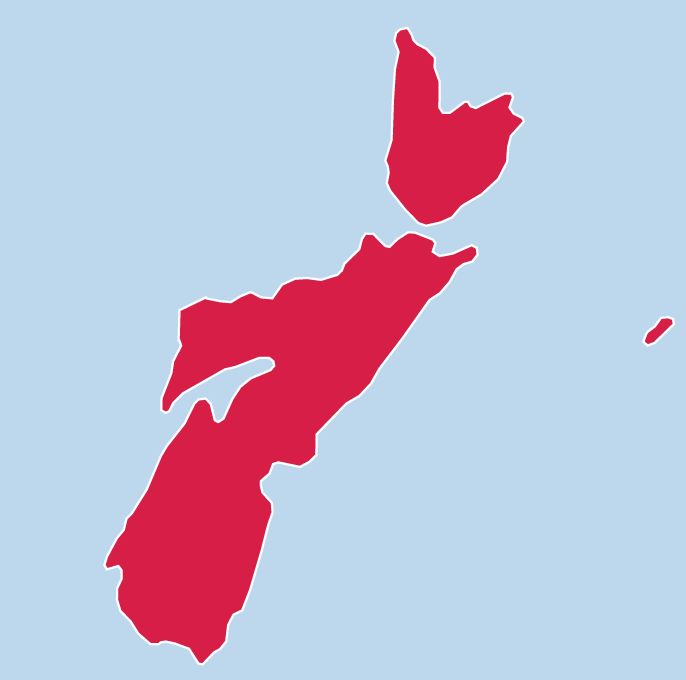
Nouvelle-Écosse
FILTRER PAR : CATÉGORIES VILLE
Activités et expériences
- Chéticamp, l’Acadie traditionnelle aux portes d’un splendide parc naturel
- Deep Sky Eye Observatory
- Falaises fossilifères de Joggins
- Grand-Pré, lieu de mémoire de la Déportation des Acadiens
- Halifax, la capitale qui veut accroître la visibilité de sa francophonie
- L’impressionnant patrimoine de la Forteresse-de-Louisbourg
- Lieu historique national Alexander-Graham-Bell
- Musée de la pêche au thon sportive de Wedgeport
- Musée des Acadiens des Pubnicos
- Nuit Stella
- Parc national des Hautes-Terres-du-Cap-Breton
- Port-Royal, lieu fondateur de l’Acadie
- Pubnico, son dynamisme, son Village historique acadien et son Musée
- Sentier Acadie historique
- Site Web Visitez Nouvelle-Écosse
- Tusket Island Tours
- La S'Maine Acadienne de Par en Bas
- Excursion interprétative des Côtes acadiennes
- Lieu historique national du Fort-Anne
- Lieu historique national de l’Île-Georges
- NovaShores Sea Kayaking
- Boatskeg Distilling Co
- Lieu historique national de la Citadelle-d’Halifax
- Clare Market Fair
- Parc national et lieu historique national Kejimkujik
- Parc national Kejimkujik Bord de mer
- Le Portage Golf Club
- Parc municipal de l'Anse-des-Belliveau
- Lieu historique national de l’Établissement-Melanson
- Lieu historique national de la Redoute-York
Arts et culture
- Centre de la Mi-Carême
- Conseil des Arts de Chéticamp
- Isle Madame Historical Society
- La Picasse
- La remarquable effervescence artistique contemporaine en Acadie
- La Société Saint-Pierre (Trois Pignons)
- Musée canadien de l’immigration du Quai 21
- Rendez-vous de la Baie
- Village historique des acadiens de la Nouvelle-Écosse
- Maritime Museum of the Atlantic
Hébergement
Expériences culinaires
- La Cuisine Robicheau
- Les Beaux vendredis
- Creamy Treat Ice Cream Ltd.
- Ratinaud French Cuisine
- Vins Maison Meuse et Fils
- Fundy Complex & Restaurant
- Yarmouth Rotary Ribfest
- Charlotte Lane cafe
- Red Cap Restaurant and Motel
- Studio Yarmouth Café et Galerie
- Honey Bees Yarmouth
- Rousseau Chocolatier
- Liquid Assets NS
Portrait des communautés
Advocate Harbor
Annapolis Royal
Arcadia
Argyle
Arichat
Baddeck
Baie Sainte-Marie
Belliveaus Cove
Boudreauville
Chéticamp
- Centre de la Mi-Carême
- Chéticamp, l’Acadie traditionnelle aux portes d’un splendide parc naturel
- Conseil des Arts de Chéticamp
- La Société Saint-Pierre (Trois Pignons)
- Le Portage Golf Club
Church Point
Clare
Clare-Argyle
Comeauville
Dartmouth
Digby
Goffs
Grand-Pré
Granville Ferry
Halifax
- Halifax, la capitale qui veut accroître la visibilité de sa francophonie
- La remarquable effervescence artistique contemporaine en Acadie
- Musée canadien de l’immigration du Quai 21
- Site Web Visitez Nouvelle-Écosse
- Ratinaud French Cuisine
- Lieu historique national de l’Île-Georges
- Lieu historique national de la Citadelle-d’Halifax
- Maritime Museum of the Atlantic
- Rousseau Chocolatier
- Lieu historique national de la Redoute-York
Ingonish Beach
Joggins
Kejimkujik
Lake Kegeshook
Little Brook
Louisbourg
Lower Wedgeport
Lower West Pubnico
Meteghan
Pointe-de-l'Église
Port Royal
Pubnico
- Pubnico, son dynamisme, son Village historique acadien et son Musée
- Village historique des acadiens de la Nouvelle-Écosse
- Creamy Treat Ice Cream Ltd.
- Red Cap Restaurant and Motel
Saulnierville
Shelburne
Tusket
West Pubnico
Yarmouth

Terre-Neuve-et-Labrador
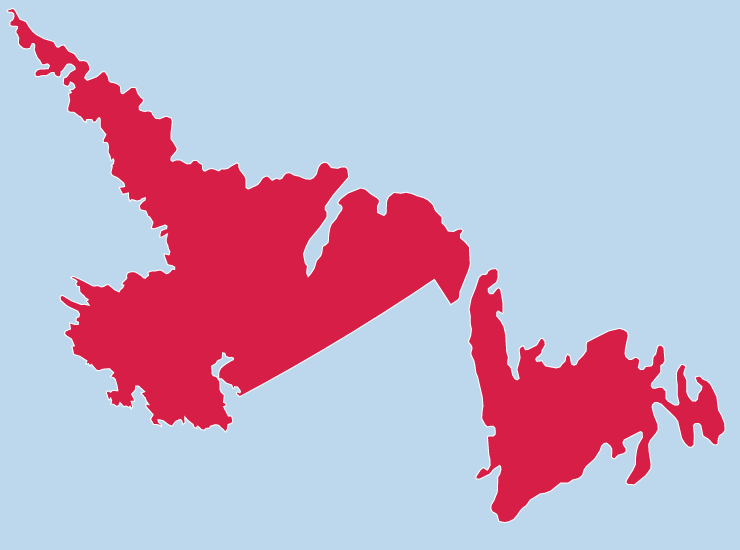
Terre-Neuve-et-Labrador
FILTRER PAR : CATÉGORIES VILLE
Activités et expériences
- Colony of Avalon Foundation
- Cupids Legacy center
- Johnson Geo Centre
- Lieu historique national de Castle Hill-Plaisance : une vue imprenable sur l’histoire !
- Manuels River Interpretation Center
- Mistaken Point Ecological Reserve
- O'Brien's Whale and Bird Tours
- St. John’s Walking Tours
Hébergement
Expériences culinaires
Portrait des communautés
- French Shore, la mémoire des pêcheries françaises à Terre-Neuve-et-Labrador
- La Société historique du French Shore & Le Centre d'interprétation du French Shore
- Péninsule de Port-au-Port, un patrimoine francophone à Terre-Neuve (PORTRAIT COMM)
- St. John’s, capitale terre-neuvienne et centre de la communauté francophone de l’île
Bay Bulls
Conception Bay South
Conche
- French Shore, la mémoire des pêcheries françaises à Terre-Neuve-et-Labrador
- La Société historique du French Shore & Le Centre d'interprétation du French Shore
Cupids
Ferryland
Grate Coves
New Perlican
Péninsule de Port-au-Port
Placentia Bay
Portugal Cove South
Saint John's
- Johnson Geo Centre
- St. John’s, capitale terre-neuvienne et centre de la communauté francophone de l’île
- St. John’s Walking Tours
Saint Lunaire-Griquet

Manitoba
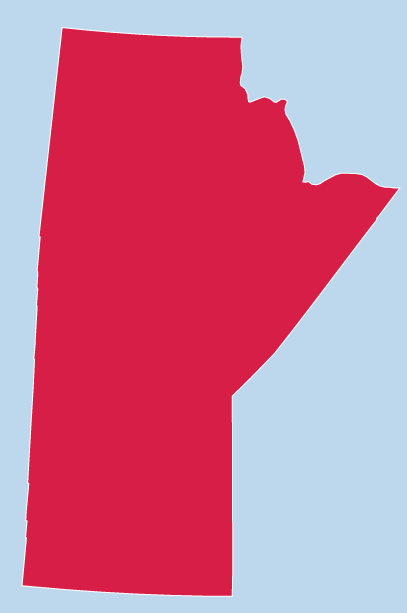
Manitoba
FILTRER PAR : CATÉGORIES VILLE
Activités et expériences
- Aikens Lake Lodge
- Centre d'interprétation du marais Oak Hammock
- Esplanade Riel à Winnipeg, un magnifique pont reliant les gens et les cultures
- Festival du Voyageur, le plus grand festival d’hiver dans l’Ouest canadien
- FortWhyte Alive
- Harness Adventure Mushing Co.
- Le Nonsuch, à l’origine de la Compagnie de la Baie d’Hudson
- Les Casinos de Winnipeg
- Musée des enfants (Winnipeg)
- Thermëa
- Tourisme Riel
- Nature’s Edge Tourism
Arts et culture
- À la découverte des artistes franco-manitobains !
- Fort Gibraltar : faire l’expérience du patrimoine de la traite des fourrures
- La cathédrale de Saint-Boniface : un hommage à la résilience des Franco-Manitobains
- Le Centre du patrimoine de la Société historique de Saint-Boniface, l’avenir de la mémoire franco-manitobaine
- Le parc Upper Fort Garry / Fort Garry-d’en-Haut, renaissance d’un patrimoine fondateur à Winnipeg
- Les trésors du Musée de Saint-Boniface, le couvent des Sœurs grises et la collection Louis Riel
- Maison des artistes
- Maison Gabrielle Roy
- Maison Riel dans Saint-Vital, se souvenir des Métis et de leur meneur Louis Riel
- Monnaie royale canadienne
- Musée canadien pour les droits de la personne : une institution pionnière
- Musée du Manitoba
- Musée du patrimoine de la rivière Winnipeg
- Théâtre Cercle Molière, au cœur de la scène francophone à Winnipeg depuis 1925
- Saint-Norbert, une invitante banlieue francophone de Winnipeg
- Centre Culturel Franco-Manitobain (CCFM)
Hébergement
Expériences culinaires
Portrait des communautés
Aikens Lake
Glenlea
Pinawa
Richer
River Hills
Saint Adolphe
Saint Boniface
- La cathédrale de Saint-Boniface : un hommage à la résilience des Franco-Manitobains
- Le Centre du patrimoine de la Société historique de Saint-Boniface, l’avenir de la mémoire franco-manitobaine
- Les trésors du Musée de Saint-Boniface, le couvent des Sœurs grises et la collection Louis Riel
Saint Claude
Saint Joseph
Saint-Pierre-Jolys
Selkirk
Stonewall
Winnipeg
- À la découverte des artistes franco-manitobains !
- Bon appétit Saint-Boniface
- Esplanade Riel à Winnipeg, un magnifique pont reliant les gens et les cultures
- Festival du Voyageur, le plus grand festival d’hiver dans l’Ouest canadien
- Fort Gibraltar : faire l’expérience du patrimoine de la traite des fourrures
- FortWhyte Alive
- Le Nonsuch, à l’origine de la Compagnie de la Baie d’Hudson
- Les Casinos de Winnipeg
- Maison des artistes
- Maison Gabrielle Roy
- Maison Riel dans Saint-Vital, se souvenir des Métis et de leur meneur Louis Riel
- Monnaie royale canadienne
- Musée canadien pour les droits de la personne : une institution pionnière
- Musée des enfants (Winnipeg)
- Musée du Manitoba
- Musée du patrimoine de la rivière Winnipeg
- Théâtre Cercle Molière, au cœur de la scène francophone à Winnipeg depuis 1925
- Thermëa
- Tourisme Riel
- Saint-Norbert, une invitante banlieue francophone de Winnipeg
- Centre Culturel Franco-Manitobain (CCFM)

Saskatchewan

Saskatchewan
FILTRER PAR : CATÉGORIES VILLE
Activités et expériences
- Churchill River Canoe Outfitters
- Festival Fête fransaskoise, célébrer la francophonie en Saskatchewan
- Government House
- Over the Hill Orchards
- Palais législatif de la Saskatchewan
- Patrimoine naturel et linguistique de la rivière Churchill
Arts et culture
- Batoche, point tournant dans l’histoire des Métis
- Gravelbourg, au centre du patrimoine francophone en Saskatchewan
- Hand Wave Gallery
- La Troupe du Jour de Saskatoon : plus que du théâtre en français
- Le bison, source de vie et espèce protégée
- Les Fransaskois, une communauté francophone remplie de talents !
Hébergement
Portrait des communautés
Fort Saskatchewan
Gravelbourg
Lumsden
Maple Creek
Meacham
Missinipe
Regina
- Batoche, point tournant dans l’histoire des Métis
- Government House
- Regina, au centre de la vibrante communauté francophone de la Saskatchewan
Saskatoon
- Festival Fête fransaskoise, célébrer la francophonie en Saskatchewan
- La Troupe du Jour de Saskatoon : plus que du théâtre en français
- Les Fransaskois, une communauté francophone remplie de talents !
- Palais législatif de la Saskatchewan
- Patrimoine naturel et linguistique de la rivière Churchill
Willow Bunch

Alberta
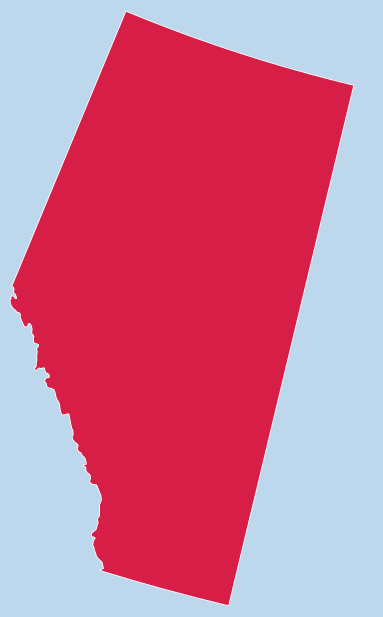
Alberta
FILTRER PAR : CATÉGORIES VILLE
Activités et expériences
- Healing à la source
- Paradis Valley Honey
- Bow Valley Ranche
- Calgary Heritage Park
- Canada’s Sports Hall of Fame
- Canmore Cave Tours
- Calgary Stampede
- Circuit pédestre BaladoDécouverte de Rouleauville
- Le Festival des sucres de Calgary : célébrer et promouvoir la francophonie albertaine
- Le jardin botanique de l’Université de l’Alberta
- Le Téléphérique de Jasper
- Lieu historique national du Ranch-Bar U
- New Age Travel and Services
- Prairie Garden & Adventure Farm
- Pursuit Adventures
- Réseau touristique bilingue du nord de l’Alberta
- Rockies Heli Canada
- Rocky Mountain House, explorer le patrimoine de la traite des fourrures
- Rouleauville, aux origines francophones de Calgary
- Site historique national de la Mine de charbon Atlas
- Ski Banff-Lake Louise-Sunshine
- Ski Marmot Basin
- SunDog Tours Co.
- Philip J. Currie Dinosaur Museum
Arts et culture
- Baladodiffusion La Place une série qui raconte une place
- Festival Edmonton Chante
- Fort Whoop-Up
- Galt Museum & Archives
- Lac La Biche, un site historique majeur de l’Alberta
- Le Parc de Fort Edmonton
- Le patrimoine francophone de Saint-Albert, Morinville et Legal
- Medalta in the Historic Clay District
- Saint-Paul, centre névralgique de la région francophone du nord-est de l’Alberta
- Studio Bell, Centre National de Musique
- Campus Saint-Jean de l’Université de l’Alberta, un atout majeur pour la francophonie albertaine
Hébergement
Expériences culinaires
Portrait des communautés
Banff
Beaumont
Bon Accord
Calgary
- Fairmont Palliser
- Bow Valley Ranche
- Canada’s Sports Hall of Fame
- Calgary Stampede
- Circuit pédestre BaladoDécouverte de Rouleauville
- Le Festival des sucres de Calgary : célébrer et promouvoir la francophonie albertaine
- New Age Travel and Services
- Réseau touristique bilingue du nord de l’Alberta
- Rouleauville, aux origines francophones de Calgary
- Studio Bell, Centre National de Musique
Canmore
Cline River
Cochrane
East Coulee
Edmonton
- Baladodiffusion La Place une série qui raconte une place
- Célébrez l’art et la culture francophones en Alberta
- Fairmont Hotel Macdonald
- Festival Edmonton Chante
- La Cité francophone d’Edmonton, un centre qui rayonne
- Le Parc de Fort Edmonton
- Campus Saint-Jean de l’Université de l’Alberta, un atout majeur pour la francophonie albertaine
Edmonton
Girouxville
Jasper
Lac la Biche
Lethbridge
Medicine Hat
Pekisko
R
Red Deer
Saint-Paul
St. Albert
Vermilion
Watino
Wembley

Colombie-Britannique
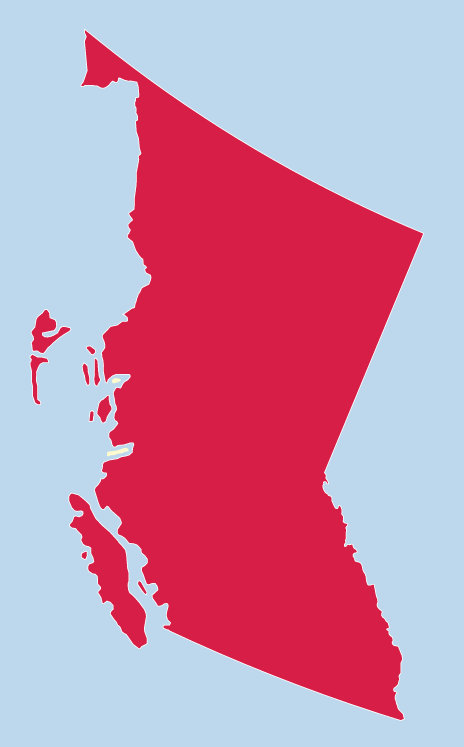
Colombie-Britannique
FILTRER PAR : CATÉGORIES VILLE
Activités et expériences
- Nimmo Bay Wilderness Resort
- Découvrez l'Île de Vancouver par la photographie
- Les francophones de la vallée de l’Okanagan : pionniers et contemporains
- Fort St. James, au cœur du commerce des fourrures et de son héritage
- Go Fish Charters
- Festival franco-canadien Vive les voyageurs
- Free Spirit Sailing
- Maillardville : les pionniers francophones du grand Vancouver et le Festival du Bois
- A.E. Vancouver Private Tours & Charters
- Explore Your BC Tours
- Festival d’été francophone de Vancouver
- Rocky Mountaineer
- Sea to Sky Gondola
- Atlin Helin Ski
- Aventures sous-marine - Rendez-vous Dive
- West Coast Canyoning
- Haida Style Expedition
Arts et culture
- Le précieux héritage francophone de Victoria
- De l’autre côté des Rocheuses, la scène artistique francophone britanno-colombienne
- Lieu historique national du Fort Langley
- Lieu historique national Gulf of Georgia Cannery
- Island Gourmet Trails
- Mary Fox Pottery
- Roedde House Museum
- Yale : traite des fourrures, ruée vers l’or et chemin de fer transcontinental
- Alchemist Distiller
Hébergement
Expériences culinaires
Portrait des communautés
Atlin
City of Courtenay
Coquitlam
Gabriola
Haida Gwaii
Langley
Merrit
Nimmo Bay
Rose Harbour
Squamish
Summerland
Tofino
Vancouver
- De l’autre côté des Rocheuses, la scène artistique francophone britanno-colombienne
- Les francophones de la vallée de l’Okanagan : pionniers et contemporains
- A.E. Vancouver Private Tours & Charters
- Explore Your BC Tours
- Festival d’été francophone de Vancouver
- Haida House at Tllaal
- Lieu historique national Gulf of Georgia Cannery
- Rocky Mountaineer
- Roedde House Museum
- Sea to Sky Gondola
- Townsite Brewing Inc
- Aventures sous-marine - Rendez-vous Dive
- West Coast Canyoning
- Haida Style Expedition
Victoria
Yale

Yukon
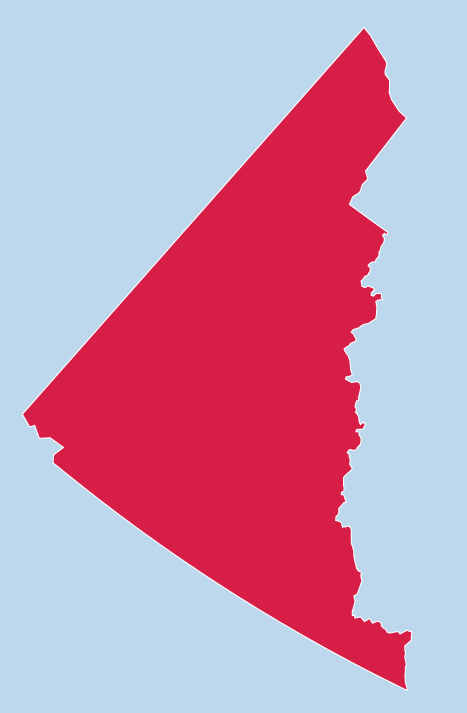
Yukon
FILTRER PAR : CATÉGORIES VILLE
Activités et expériences
- Atlin helinSki
- Casino Diamond Tooth Gerties
- Goldbottom Mine Tours
- The Klondike Experience
- Yukon Backcountry Skiing
- Icefield Discovery
- Eclipse Nordic Hot Springs
- Alayuk Adventures
- Boréale Explorers
- Nature Tours of Yukon
- Réserve faunique du Yukon
- Ruby Range Adventure
- Terre Boréale
- Wild Exposure
- The call of the Yukon
- Yukon Fishing Adventure
- Yukon Shinevalley Expeditions
- Into the Wild Adventures
- Sky High Wilderness Ranch
Arts et culture
- Lieux historiques nationaux du Klondike
- Musée Jack London
- Revivre un événement historique national : la ruée vers l'or du Klondike
- Musée George Johnston
- Centre d'interprétation de la Béringie
- Le Yukon autrement : partez à la rencontre d’histoires inédites
Hébergement
Atlin
Dawson City
- Casino Diamond Tooth Gerties
- Goldbottom Mine Tours
- Lieux historiques nationaux du Klondike
- Musée Jack London
- Revivre un événement historique national : la ruée vers l'or du Klondike
- The Klondike Experience
- Yukon Backcountry Skiing
Kluane Lake
Takhini Hotspring
Teslin
Whitehorse
- Alayuk Adventures
- Boréale Explorers
- Centre d'interprétation de la Béringie
- Le Yukon autrement : partez à la rencontre d’histoires inédites
- Nature Tours of Yukon
- Réserve faunique du Yukon
- Ruby Range Adventure
- Terre Boréale
- Wild Exposure
- The call of the Yukon
- Yukon Fishing Adventure
- Yukon Shinevalley Expeditions
- Into the Wild Adventures
- Cranberry Lodge
- Caribou RV Park
- Sky High Wilderness Ranch

Territoires du Nord-Ouest
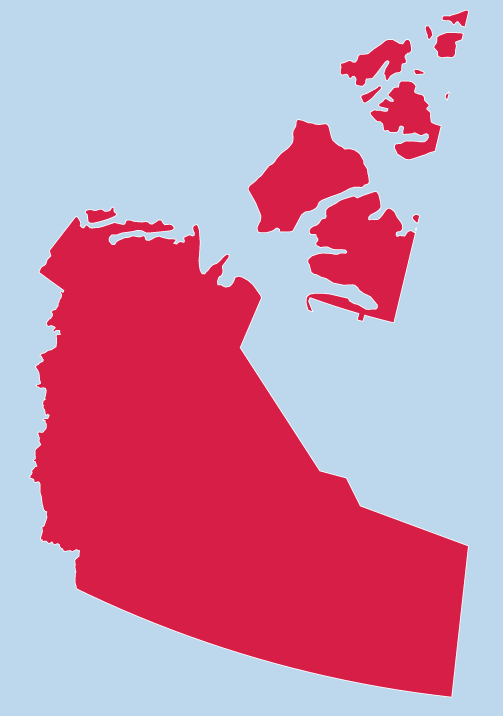
Territoires du Nord-Ouest
FILTRER PAR : CATÉGORIES VILLE
Activités et expériences
- Great Slave Lake Safaris
- Balado Découverte : Tour autoguidé du Vieux-Yellowknife
- Narwal Northern Adventures
- Old Town Bikeworks
- Yellowknife Outdoor Adventures
Arts et culture
- Art public francophone, diversité et rapprochements culturels à Yellowknife
- Centre du patrimoine septentrional Prince-de-Galles
- Old Town Glassworks
Hébergement
Aylmer Lake
Fort Smith
Yellowknife

Nunavut
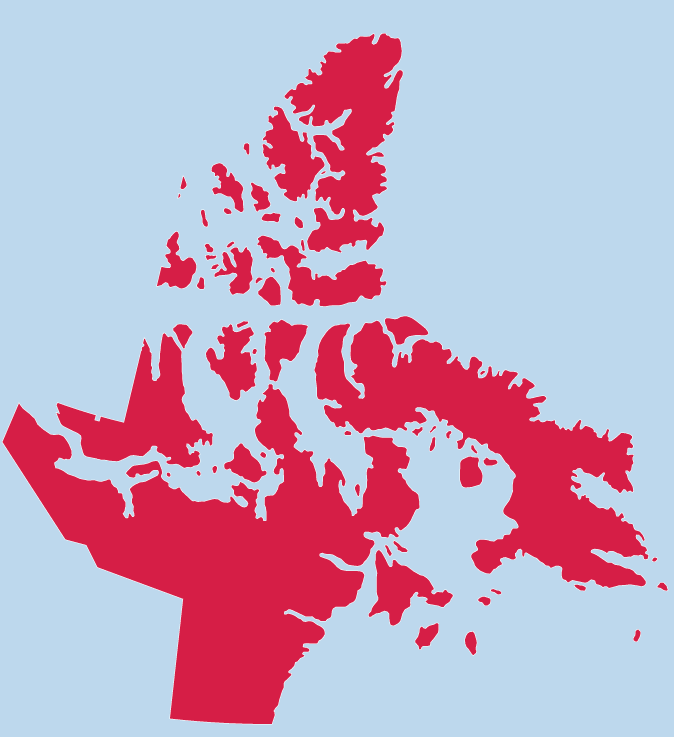
Nunavut
FILTRER PAR : CATÉGORIES VILLE
Activités et expériences
Arts et culture

Activités et expériences
- Atlin helinSki
- Casino Diamond Tooth Gerties
- Goldbottom Mine Tours
- The Klondike Experience
- Yukon Backcountry Skiing
- Icefield Discovery
- Eclipse Nordic Hot Springs
- Alayuk Adventures
- Boréale Explorers
- Nature Tours of Yukon
- Réserve faunique du Yukon
- Ruby Range Adventure
- Terre Boréale
- Wild Exposure
- The call of the Yukon
- Yukon Fishing Adventure
- Yukon Shinevalley Expeditions
- Into the Wild Adventures
- Great Slave Lake Safaris
- Balado Découverte : Tour autoguidé du Vieux-Yellowknife
- Narwal Northern Adventures
- Old Town Bikeworks
- Yellowknife Outdoor Adventures
- Nimmo Bay Wilderness Resort
- Découvrez l'Île de Vancouver par la photographie
- Les francophones de la vallée de l’Okanagan : pionniers et contemporains
- Fort St. James, au cœur du commerce des fourrures et de son héritage
- Go Fish Charters
- Festival franco-canadien Vive les voyageurs
- Free Spirit Sailing
- Maillardville : les pionniers francophones du grand Vancouver et le Festival du Bois
- A.E. Vancouver Private Tours & Charters
- Explore Your BC Tours
- Festival d’été francophone de Vancouver
- Rocky Mountaineer
- Sea to Sky Gondola
- Atlin Helin Ski
- Aventures sous-marine - Rendez-vous Dive
- West Coast Canyoning
- Haida Style Expedition
- Churchill River Canoe Outfitters
- Festival Fête fransaskoise, célébrer la francophonie en Saskatchewan
- Government House
- Over the Hill Orchards
- Palais législatif de la Saskatchewan
- Patrimoine naturel et linguistique de la rivière Churchill
- Aikens Lake Lodge
- Centre d'interprétation du marais Oak Hammock
- Esplanade Riel à Winnipeg, un magnifique pont reliant les gens et les cultures
- Festival du Voyageur, le plus grand festival d’hiver dans l’Ouest canadien
- FortWhyte Alive
- Harness Adventure Mushing Co.
- Le Nonsuch, à l’origine de la Compagnie de la Baie d’Hudson
- Les Casinos de Winnipeg
- 1000 Islands Helicopter Tours
- Aire de conservation Sager
- Aquatarium
- Aventure cycliste tout-inclus à l'Île manitoulin
- Aventures l'esprit du nord
- Gananoque Boat Line - 1000 Islands Cruises
- Georgian Bay Airways
- La Route touristique Champlain de l’Ontario : sur les pas du père de la Nouvelle-France
- Le Muséoparc Vanier, préserver et célébrer le patrimoine francophone à Ottawa
- Les chutes Niagara, le visage français d’une spectaculaire attraction naturelle
- Musée canadien de l’histoire
- Ottawa Walking Tours
- Owl Rafting
- Parc aquatique Calypso
- Parc historique du Fort William
- Scenic Caves Nature Adventures
- Science Nord
- Terre dynamique
- Tour du lac Témiscamingue
- Marche Hantée
- Voyageur Wilderness
- Rideau Tours et locations
- Family Earth
- Forfaits et excursions ecotouristiques blaq-bear
- Inukpak Outfitting
- Aquarium et Centre marin du Nouveau-Brunswick
- Aventures Plein Air Du Repos
- Bass Attack Fishing
- Croisières Shediac Bay Cruises
- Deux îles, mille trésors
- Écocentre homarus
- Jardin botanique du Nouveau-Brunswick
- L'Île Beaubears
- La remarquable effervescence artistique contemporaine en Acadie
- Le 15 août, célébrez la fête nationale de l’Acadie!
- Miellerie Charlo
- Mont Carleton
- Parc des Rochers Hopewell Rocks
- Parc Vélo Sugarloaf
- Réserve naturelle de la Pointe-Daly
- Roads To Sea
- Savonnerie Olivier
- Sentier Nepisiguit Mi'gmaq
- Verger Belliveau
- Zip Zag inc
- Zoo de Magnetic Hill
- Chéticamp, l’Acadie traditionnelle aux portes d’un splendide parc naturel
- Deep Sky Eye Observatory
- Falaises fossilifères de Joggins
- Grand-Pré, lieu de mémoire de la Déportation des Acadiens
- Halifax, la capitale qui veut accroître la visibilité de sa francophonie
- L’impressionnant patrimoine de la Forteresse-de-Louisbourg
- Lieu historique national Alexander-Graham-Bell
- Musée de la pêche au thon sportive de Wedgeport
- Musée des Acadiens des Pubnicos
- Nuit Stella
- Parc national des Hautes-Terres-du-Cap-Breton
- Port-Royal, lieu fondateur de l’Acadie
- Pubnico, son dynamisme, son Village historique acadien et son Musée
- Sentier Acadie historique
- Site Web Visitez Nouvelle-Écosse
- Tusket Island Tours
- Les Maisons de bouteilles
- Maison du gouvernement à Fanningbank
- Mill River Experience, Resort - Golf - Campground
- Colony of Avalon Foundation
- Cupids Legacy center
- Johnson Geo Centre
- Lieu historique national de Castle Hill-Plaisance : une vue imprenable sur l’histoire !
- Manuels River Interpretation Center
- Mistaken Point Ecological Reserve
- O'Brien's Whale and Bird Tours
- Healing à la source
- Paradis Valley Honey
- Musée des enfants (Winnipeg)
- Thermëa
- Tourisme Riel
- Bow Valley Ranche
- Calgary Heritage Park
- Canada’s Sports Hall of Fame
- Canmore Cave Tours
- Calgary Stampede
- Circuit pédestre BaladoDécouverte de Rouleauville
- Le Festival des sucres de Calgary : célébrer et promouvoir la francophonie albertaine
- Le jardin botanique de l’Université de l’Alberta
- Le Téléphérique de Jasper
- Lieu historique national du Ranch-Bar U
- New Age Travel and Services
- Prairie Garden & Adventure Farm
- Pursuit Adventures
- Réseau touristique bilingue du nord de l’Alberta
- Rockies Heli Canada
- Rocky Mountain House, explorer le patrimoine de la traite des fourrures
- Rouleauville, aux origines francophones de Calgary
- Site historique national de la Mine de charbon Atlas
- Ski Banff-Lake Louise-Sunshine
- Ski Marmot Basin
- SunDog Tours Co.
- Parc provincial Samuel de Champlain
- Parc provincial de la rivière des Français
- Parc provincial Driftwood
- Centre Madawaska Kanu
- Parc provincial Voyageur
- Zoo sauvage de Saint-Félicien
- Zoo de Granby
- Wendake, le patrimoine d’une grande nation
- Vivre Percé au moins une fois dans sa vie !
- Visiter le magnifique village ressuscité de Val-Jalbert
- Village Vacances Valcartier
- Village Québécois d’Antan
- Vieux-Québec, joyau du patrimoine mondial de l’UNESCO
- Tourisme Isle-aux-Coudres
- Tadoussac : les attraits géants d’une petite localité
- Surprise sous la terrasse : le prestigieux site archéologique des Forts-et-Châteaux-Saint-Louis
- Surf sur le Canal Lachine
- Site historique maritime de Pointe-au-Père : éclairer le passé maritime du Québec
- Rodéo du camion
- Résidence de George-Étienne Cartier, illustre politicien canadien-français, Père de la Confédération
- Quartier Petit-Champlain, le bonheur du patrimoine
- Pulperie de Chicoutimi, un patrimoine industriel exceptionnel
- Parlement du Québec et Assemblée nationale, lieu de pouvoir et de mémoire
- Parc Safari
- Parc Oméga
- Parc national du Mont-Tremblant
- Parc national du Bic
- Parc national de l’Île-Bonaventure-et-du-Rocher-Percé
- Parc aquatique Sommet Saint-Sauveur
- OSHEAGA
- Mont Saint-Pierre Deltaplane
- Maison Saint-Gabriel, mise en valeur exemplaire de l’histoire à Montréal
- Les incontournables plaines d’Abraham : patrimoine, musées, spectacles et activités de plein air
- Les Forges du Saint-Maurice, patrimoine de l’industrie sidérurgique au Canada
- Le Vieux-Séminaire de Québec, un trésor culturel et patrimonial
- Le tour de l’île d’Orléans, un parcours inoubliable
- Le site patrimonial de Trois-Rivières : se promener dans l’histoire
- Le précieux legs des Ursulines, premières enseignantes du Québec
- Le parc du Mont-Royal, une oasis naturelle et culturelle au cœur de Montréal
- Le monastère des Augustines, valoriser et transmettre le patrimoine
- Le Marché Bonsecours, une icône du Vieux-Montréal
- Le manoir Louis-Joseph-Papineau, un bâtiment patrimonial doublement important
- Le Jardin botanique de Montréal, vitrine et gardien d’un extraordinaire patrimoine végétal
- Le Festival de musique émergente
- Le Festival d’été de Québec
- Le Centre d’histoire de Montréal, une agréable machine à remonter le temps
- Le Carnaval de Québec : célébrer notre hiver depuis trois générations
- Le Banc-de-pêche-de-Paspébiac, joyau patrimonial sur un barachois
- La Route des cidres
- La Route des Belles-Histoires, découvrir le patrimoine de la magnifique région des Laurentides
- La Réserve mondiale de la biosphère de Charlevoix
- La Cité de l’Or, un trésor du patrimoine minier en Abitibi
- La Cité de l’énergie, plus qu’un patrimoine hydroélectrique et industriel exceptionnel !
- L’Oratoire Saint-Joseph, un sanctuaire de renommée internationale
- L’exposition permanente sur l’histoire du Québec du Musée de la civilisation du Québec
- Foresta Lumina
- Festival western de Saint-Tite
- Festival de la chanson de Tadoussac
- Espace pour la vie – Jardin botanique
- Espace pour la vie – Insectarium
- Espace pour la vie – Planétarium
- Espace pour la vie – Biodôme
- Écomusée du fier monde : un musée citoyen de l’histoire industrielle et ouvrière de Montréal
- Deux bonnes raisons de célébrer l’histoire à Chambly
- Croisière Partie de pêche
- Citadelle de Québec, quartier général du Royal 22e Régiment, un lieu patrimonial unique
- Charme et richesse du site patrimonial du Vieux-Montréal
- Cassis Monna et filles
- Boréalis, fascinant centre d’histoire de l’industrie papetière à Trois-Rivières
- Basilique Notre-Dame de Montréal, joyau du patrimoine religieux québécois
- Aérosport
- Philip J. Currie Dinosaur Museum
- Le Centre Goéland
- Véloroute Péninsule acadienne
- Creekside RnR Glamping Accomodation
- Nature’s Edge Tourism
- Maplebrook Retreat – Glamping, Spa Nordique, Restaurant
- Parc national de l’Île-du-Prince-Édouard
- Site patrimonial Green Gables
- NorthWinds
- La S'Maine Acadienne de Par en Bas
- Sky High Wilderness Ranch
- Excursion interprétative des Côtes acadiennes
- Lieu historique national du Fort-Anne
- Lieu historique national de l’Île-Georges
- NovaShores Sea Kayaking
- Boatskeg Distilling Co
- Lieu historique national de la Citadelle-d’Halifax
- St. John’s Walking Tours
- Clare Market Fair
- Spa le nordique de la vie
- Parc national et lieu historique national Kejimkujik
- Parc national Kejimkujik Bord de mer
- Le Portage Golf Club
- Parc municipal de l'Anse-des-Belliveau
- Lieu historique national de l’Établissement-Melanson
- Lieu historique national de la Redoute-York

Arts et culture
- Lieux historiques nationaux du Klondike
- Musée Jack London
- Revivre un événement historique national : la ruée vers l'or du Klondike
- Musée George Johnston
- Centre d'interprétation de la Béringie
- Le Yukon autrement : partez à la rencontre d’histoires inédites
- Art public francophone, diversité et rapprochements culturels à Yellowknife
- Centre du patrimoine septentrional Prince-de-Galles
- Old Town Glassworks
- Le précieux héritage francophone de Victoria
- De l’autre côté des Rocheuses, la scène artistique francophone britanno-colombienne
- Lieu historique national du Fort Langley
- Lieu historique national Gulf of Georgia Cannery
- Island Gourmet Trails
- Mary Fox Pottery
- Roedde House Museum
- Yale : traite des fourrures, ruée vers l’or et chemin de fer transcontinental
- Batoche, point tournant dans l’histoire des Métis
- Gravelbourg, au centre du patrimoine francophone en Saskatchewan
- Hand Wave Gallery
- La Troupe du Jour de Saskatoon : plus que du théâtre en français
- Le bison, source de vie et espèce protégée
- Les Fransaskois, une communauté francophone remplie de talents !
- À la découverte des artistes franco-manitobains !
- Fort Gibraltar : faire l’expérience du patrimoine de la traite des fourrures
- La cathédrale de Saint-Boniface : un hommage à la résilience des Franco-Manitobains
- Le Centre du patrimoine de la Société historique de Saint-Boniface, l’avenir de la mémoire franco-manitobaine
- Le parc Upper Fort Garry / Fort Garry-d’en-Haut, renaissance d’un patrimoine fondateur à Winnipeg
- Les trésors du Musée de Saint-Boniface, le couvent des Sœurs grises et la collection Louis Riel
- Ancienne prison de L’Orignal
- Centre culturel Le Chenail - Maison de l'Île
- Écomusée de Hearst
- Festival du Loup de Lafontaine, célébrer la culture et les racines francophones
- Fort William, pôle d’échanges majeur et forte influence française
- Franco-Fête de Toronto : faire vibrer la francophonie en musique
- Le Festival franco-ontarien d’Ottawa, entendre et étendre la culture francophone
- Le Parlement canadien et les francophones du Canada
- Les artistes franco-ontariens, une richesse culturelle nationale
- Les francophones aux origines de Toronto, un patrimoine discret
- Maison Macaulay
- North Bay Museum
- Place du marché de la scierie patrimoniale
- Sainte-Marie-au-Pays-des-Hurons, première mission française au cœur de l’Amérique
- Sanctuaire des martyrs
- Sentier « Connections » de Billings
- Société d'histoire de Toronto Historitours
- Théâtre français à Toronto : premier à « brûler les planches » dans la Ville Reine
- Toronto Balades
- Université d’Ottawa, bilinguisme et tremplin pour les Franco-Ontariens
- Vitalité francophone à Orléans et dans le comté Prescott-Russell
- Musée canadien du canot
- Musée de l’histoire des Milles-Îles
- L'héritage du capitaine Joseph-Elzéar Bernier/Kapitaikallak au Nunavut
- Kings Landing
- L’incontournable Festival acadien de Caraquet
- Musée du Nouveau-Brunswick
- The Chocolate Museum
- Centre de la Mi-Carême
- Conseil des Arts de Chéticamp
- Isle Madame Historical Society
- La Picasse
- La remarquable effervescence artistique contemporaine en Acadie
- La Société Saint-Pierre (Trois Pignons)
- Musée canadien de l’immigration du Quai 21
- Rendez-vous de la Baie
- Village historique des acadiens de la Nouvelle-Écosse
- Coopérative d’artisanat d’Abram-Village
- Église historique Notre-Dame-du-Mont-Carmel
- La Coopérative de développement culturel et patrimonial de Mont-Carmel
- La remarquable effervescence artistique contemporaine en Acadie
- Maison Doucet et Banque des fermiers de Rustico, un lieu historique national révélateur de la solidarité acadienne
- Musée acadien de l’Île-du-Prince-Édouard à Miscouche : la mémoire des Acadiens de l’Île
- Port-la-Joye–Fort Amherst, des vestiges lourds de sens
- Province House
- Village musical acadien (Fête Nationale de l'Acadie)
- L’Exposition agricole et Festival acadien de la Région Évangéline
- Galerie La Palette
- Maison des artistes
- Maison Gabrielle Roy
- Maison Riel dans Saint-Vital, se souvenir des Métis et de leur meneur Louis Riel
- Monnaie royale canadienne
- Musée canadien pour les droits de la personne : une institution pionnière
- Musée du Manitoba
- Musée du patrimoine de la rivière Winnipeg
- Théâtre Cercle Molière, au cœur de la scène francophone à Winnipeg depuis 1925
- Baladodiffusion La Place une série qui raconte une place
- Festival Edmonton Chante
- Fort Whoop-Up
- Galt Museum & Archives
- Lac La Biche, un site historique majeur de l’Alberta
- Le Parc de Fort Edmonton
- Le patrimoine francophone de Saint-Albert, Morinville et Legal
- Medalta in the Historic Clay District
- Saint-Paul, centre névralgique de la région francophone du nord-est de l’Alberta
- Studio Bell, Centre National de Musique
- Carrefour de l'Isle-Saint-Jean
- Maison du patrimoine d’Orléans
- Concerts à la grange Westben
- Musée acadien de l’Île-du-Prince-Édouard
- Saint-Norbert, une invitante banlieue francophone de Winnipeg
- Centre Culturel Franco-Manitobain (CCFM)
- Campus Saint-Jean de l’Université de l’Alberta, un atout majeur pour la francophonie albertaine
- Festival “Meat Pie”
- Festival de la chanson du Grand Ruisseau
- Alchemist Distiller
- Maritime Museum of the Atlantic

Hébergement
- Mount Logan Lodge
- Cranberry Lodge
- Caribou RV Park
- Le Aylmer Lake Lodge
- A-P Guest Ranch
- Le Wickaninnish Inn
- Historic Reesor Ranch
- Les Suites des Présidents
- Su Ben Bed & Breakfast
- L'auberge Le Barachois
- Fairmont Palliser
- Fairmont Hotel Macdonald
- Hereabouts B&B
- Best Western Pembroke Inn
- Auberge The Whitewater Inn
- Hôtel de Glace
- Resort Wild Skies
- Voyageur Houseboats
- SeaGlass B&B and Studio Ltd
- Gs B&B
- Villégiature Deux Rivières
- Somewhere Inn Calabogie
- Dôme au bord de l'eau

Expériences culinaires
- La francophonie vibrante de Vancouver
- Townsite Brewing Inc
- Bon appétit Saint-Boniface
- Bruce D. Campbell Farm & Food Discovery Center
- Aventures Ferme Ouimet
- Distillerie Rheault
- Ferme Drouin
- Ferme Leisure Farms
- Huff Estates (établissement vinicole)
- La Fromagerie St-Albert
- Microbrasserie Cassel
- Restaurant 1 Elgin
- Chocolaterie Forrat
- Randonnée gastronomique du Marché By
- Acadie Gourmet
- Distillerie Fils du Roy
- Les Brasseurs du Petit-Sault
- Richibucto River Wine Estate
- La Cuisine Robicheau
- Les Beaux vendredis
- Island Artisan Cheesehouse - La Fromagerie
- Savourez le lieu historique national Roma à Trois-Rivières, Île-du-Prince-Édouard
- Grates Cove Studios
- The Dark Tickle Company
- Restaurant Chez François
- The Old School Cheesery
- Creamy Treat Ice Cream Ltd.
- Ratinaud French Cuisine
- Vins Maison Meuse et Fils
- Café Cap Egmont
- Fundy Complex & Restaurant
- Yarmouth Rotary Ribfest
- Charlotte Lane cafe
- Red Cap Restaurant and Motel
- Studio Yarmouth Café et Galerie
- Honey Bees Yarmouth
- Rousseau Chocolatier
- Liquid Assets NS

Portrait des communautés
- Haida House at Tllaal
- Le rêve des communautés rurales francophones du sud de la Saskatchewan
- Regina, au centre de la vibrante communauté francophone de la Saskatchewan
- Le Musée Saint-Joseph, à la mémoire des pionniers francophones du sud du Manitoba
- Centre francophone de Toronto, au cœur de la francophonie plurielle torontoise
- Le Nord franco-ontarien : nature, culture et hospitalité
- Les francophones profondément enracinés dans la région de Windsor
- Sudbury, un pôle culturel franco-ontarien marquant
- Au Pays de la Sagouine, l’imaginaire acadien d’Antonine Maillet
- Edmundston, le Madawaska et le patrimoine des « Brayons »
- Fort Beauséjour-Cumberland, un jalon historique pour les francophones du Canada
- L’Université de Moncton, clé de voûte du développement des Acadiens
- La prospère communauté acadienne du grand Moncton
- Le Centre culturel Aberdeen, pôle artistique francophone à Moncton
- Le drapeau acadien géant de Saint-Louis-de-Kent et le géant Richard qui l’a conçu
- Le patrimoine militaire du fortin du P’tit Sault à Edmundston
- Monument Lefebvre de Memramcook : renaissance acadienne et vitalité culturelle contemporaine
- Parlement de Fredericton, les Acadiens et leur patrimoine politique
- Saint-Jean, une communauté francophone créative et dynamique
- Shippagan, Lamèque et Miscou, au cœur de l’Acadie maritime
- Village historique acadien de Caraquet : revivre l’histoire de l’Acadie
- Isle Madame, une communauté acadienne ancrée dans la mer
- L’Université Sainte-Anne, institution phare de la francophonie en Nouvelle-Écosse
- Le cœur en fête à la baie Sainte-Marie et au Festival acadien de Clare
- La vibrante communauté acadienne d’Abram-Village
- French Shore, la mémoire des pêcheries françaises à Terre-Neuve-et-Labrador
- La Société historique du French Shore & Le Centre d'interprétation du French Shore
- Péninsule de Port-au-Port, un patrimoine francophone à Terre-Neuve (PORTRAIT COMM)
- St. John’s, capitale terre-neuvienne et centre de la communauté francophone de l’île
- Saint-Pierre-Jolys, une accueillante communauté rurale francophone
- Beaumont, la volonté de préserver son patrimoine francophone
- Célébrez l’art et la culture francophones en Alberta
- Falher, Saint-Isidore et Girouxville, un noyau francophone à découvrir dans le nord-ouest de l’Alberta
- La Cité francophone d’Edmonton, un centre qui rayonne
- Saint-Claude au Manitoba, son ancrage francophone et ses musées

Salut Canada (Le Corridor patrimonial, culturel et touristique francophone) développé par RDÉE Canada et son Réseau national, est financé par le Ministère fédéral Patrimoine canadien dans le cadre du 150e Anniversaire du Canada.





